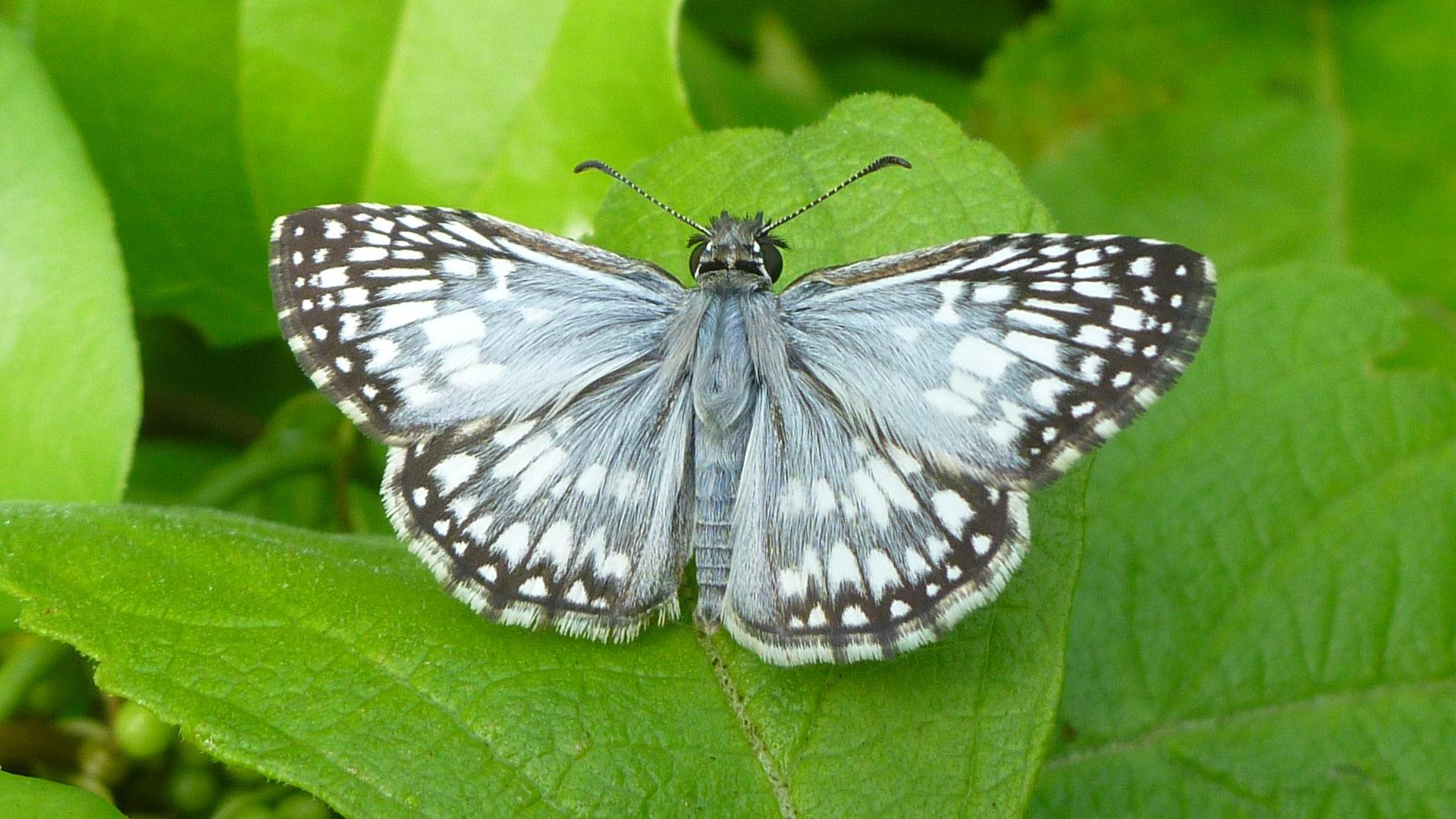

Every fall, nature lovers look forward to the arrival of monarch butterflies as they pass through Florida on an epic migration. They get a lot of attention, but our native butterflies like to live here all year long.
Dean and Sally Jue like butterfly-watching because it’s a good excuse to get out and enjoy the outdoors. Over the past ten years, they’ve become rather passionate about the “treasure hunt” of butterfly-watching because they never know what they’re going to find. They’ve been conducting butterfly surveys in the Red Hills and Apalachicola National Forest for several years. One of the goals of those surveys is to learn as much as possible about what each butterfly species needs to survive.
Sally Jue wanders the dappled, sun-lit woods of Klapp-Phipps Park, looking at the Golden-Banded Skipper. “Although it’s common to abundant at times here in Phipps Park, it is really quite rare most places. It’s been declining throughout its range in the eastern US and there’re really not many known populations. It’s more common out west.”
Different butterflies prefer the nectar of different flowers. The Golden-Banded Skipper likes the yellow sun flower called the “hairy leaf cup”, scientific name smallanthus uvedalius.
Thicket bean is a vine that sprawls over the ground and is the host plant for Golden-Banded Skipper and sometimes the Long-Tailed Skippers, commonly called bean rollers.
Prescribed burning of underbrush to prevent out-of-control forest fires is a common practice in the forests around Tallahassee. Sometimes the fire misses patches of growth, which is a boon to butterflies. In fact, that patchiness is key to a thriving butterfly population and with their butterfly surveys, Dean and Sally Jue hope to influence land management practices such as prescribed burning.
In an old-growth longleaf pine forest, where fire is applied frequently it creates open spaces where flowers and grasses thrive.
Dean Jue says “Most people think of monarchs when they thing about butterflies that migrate hundreds, thousands of miles – literally down from southern Canada down to Mexico. Well, most butterflies don’t do that. Most butterflies live their entire life cycle within one or two miles from where they emerge from their chrysalis.”
Sally adds “When butterflies are in their caterpillar stage, or the egg stage, they obviously cannot escape a fire. So if a patch of unburned vegetation is left, that increases the chance that the butterfly population will persist in spite of the fire. One of the things that we encourage managers to do is create a patchy burn effect rather than a complete, solid blackened landscape when they do a burn.” Sally continues, “Looking at the butterflies or other invertebrates provides a different perspective. It doesn’t displace management for vertebrates; it should be integrated into the whole picture.”
Dean and Sally carry binoculars and cameras with them when they venture out into the woods to look for butterflies. Guide books that came out in the late 1990s showed pictures of live butterflies, usually on flowers, instead of pressed specimens, which makes it easier for the average person to go out and identify butterflies in the field. Digital photography allows people to photograph what they see and get help with identification if needed. It allows people who aren’t necessarily trained in biology but have an interest in natural history to contribute to the body of knowledge.
Sally says “Some of these butterflies are challenging. Challenging to find, and challenging to identify. There’s always something new that you can learn and contribute.”
More information can be found at the Florida Natural Areas Inventory website and at the Florida Resources and Environmental Analaysis Center website. You can also visit WFSU\’s Ecology Blog.
Rob Diaz de Villegas is a senior producer for television at WFSU Public Media, covering outdoors and ecology. After years of producing the music program OutLoud, Rob found himself in a salt marsh with a camera, and found a new professional calling as well. That project, the National Science Foundation funded "In the Grass, On the Reef," spawned the award-winning WFSU Ecology Blog. Now in its tenth year, the Ecology Blog recently wrapped its most ambitious endeavor, the EcoCitizen Project.
Rob is married with two young sons, who make a pretty fantastic adventure squad.





